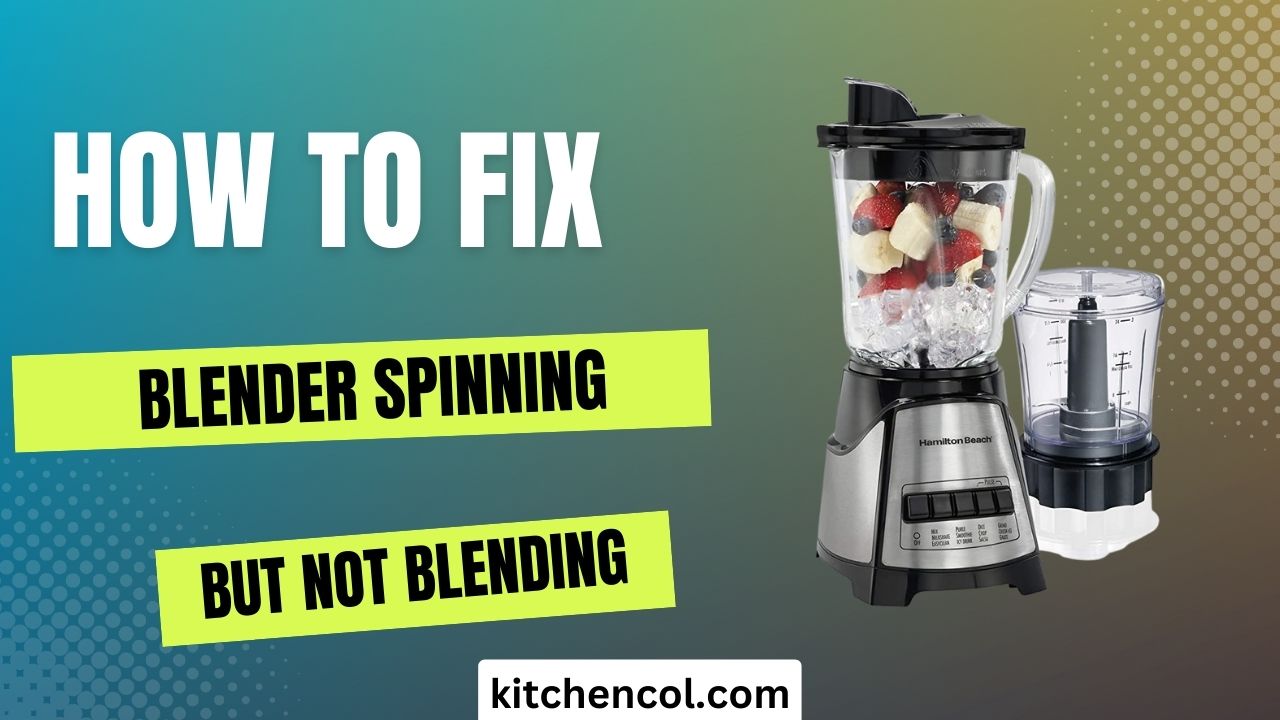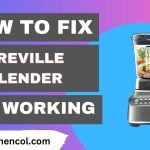Blenders are a handy tool in any kitchen, used for blending, pureeing, and crushing food ingredients. However, as with any appliance, blenders can develop problems that hinder their effectiveness. One of the most common issues is when a blender spins but does not blend. This can be frustrating, especially when you’re in the middle of making a recipe. In this blog post, we’ll explore the reasons why a blender may be spinning but not blending and offer some solutions to troubleshoot the problem.
We’ll also provide some tips on how to maintain your blender to avoid such issues in the future. So, if you’re facing this problem or want to know how to prevent it, read on.
Reasons why a blender is spinning but not blending
There are several reasons why a blender may be spinning but not blending. Understanding these reasons can help you troubleshoot the problem and find a solution. The following are a few of the most typical causes:
Blunt blades:
Blunt blades are a common cause of a blender spinning but not blending. If the blades are dull, they won’t be able to chop or puree the food effectively.
Overloaded jar:
Overloading the jar can also cause the blender to spin but not blend. If there’s too much food in the jar, the blades won’t be able to move freely and blend the ingredients.

Faulty motor:
A faulty motor can also be a reason for a blender to spin but not blend. If the motor is not working properly, it won’t provide enough power to rotate the blades effectively.
Broken or worn-out coupler:
The coupler is the part that connects the motor to the blade assembly. If it’s broken or worn out, the blender won’t be able to blend the ingredients.
Wrong blending technique:
Sometimes, a blender may be spinning but not blending because of the wrong blending technique. For example, if you’re using the wrong speed or not adding enough liquid, the blender may not blend the ingredients effectively.
By understanding these reasons, you can diagnose the problem and find the appropriate solution.
How to Troubleshoot
If your blender is spinning but not blending, don’t worry. The measures you may take to solve the issue are as follows:
Check the blades for bluntness or damage:
If the blades are blunt or damaged, they won’t be able to blend the ingredients effectively. You can try sharpening the blades or replacing them if necessary.
Reduce the number of ingredients in the jar:
If the jar is overloaded, the blades won’t be able to move freely and blend the ingredients. Try reducing the amount of food in the jar and blending it in smaller batches.
Check the motor for faults:
If the motor is faulty, it won’t provide enough power to rotate the blades effectively. You can try turning the blender off and unplugging it, then checking the motor for any visible signs of damage. If you can’t see any issues, you may need to take it to a professional for repair.
Inspect the coupler for wear or damage:
The coupler is the part that connects the motor to the blade assembly. If it’s broken or worn out, the blender won’t be able to blend the ingredients. You can try inspecting the coupler and replacing it if necessary.
Use the correct blending technique:
Make sure you’re using the correct speed and adding enough liquid to the jar. You can also try pulsing the blender to get the ingredients moving before switching to a higher speed.
By following these troubleshooting steps, you should be able to diagnose and fix the problem with your blender.
Precautions to take while using a blender
Taking precautions while using a blender can help you avoid issues such as spinning but not blending problems. Here are some precautions to keep in mind:
Do not overload the jar:
Overloading the jar can cause the blender to spin but not blend the ingredients properly. Always make sure to follow the recommended maximum fill level and blend in smaller batches if necessary.
Clean the blender regularly:
Regularly cleaning the blender, including the jar and blades, can help ensure that it works effectively. Be sure to unplug the blender before cleaning it and avoid using abrasive cleaners that can damage the surface.
Use the correct blending technique:
Using the correct blending technique, including starting with a low speed and gradually increasing it, can help ensure that the ingredients are blended properly. You should also make sure to add enough liquid to the jar to help the ingredients move freely.
Replace worn-out parts:
If any parts of the blender, such as the blades or coupler, become worn out or damaged, replace them promptly. This can help prevent issues with the blender’s performance.
By following these precautions, you can help ensure that your blender works effectively and avoid issues such as spinning but not blending problems.
Also Read: Blender Overheated Stopped Working-Ultimate Guide
Conclusion
A blender that spins but does not blend can be frustrating, but it’s a common problem that can usually be solved with some troubleshooting.
By understanding the common causes of this issue and following the steps to diagnose and fix it, you can get your blender back to working properly.
Additionally, taking precautions while using the blender, such as not overloading the jar, cleaning it regularly, and using the correct blending technique, can help prevent issues from occurring in the first place.
With these tips in mind, you can enjoy using your blender to create delicious and nutritious meals and beverages.

My name is Manan Bukhari and I am an expert in reviewing kitchen products for years. I have a passion for testing multiple gadgets especially related to home & kitchen. I love to spend my free time in resolving issues if I face some in any of my daily use things. I have fixed multiple gadgets of my home on my own without any assistance and that thing gave me confidence to make a blog on troubleshooting of items that are for daily use to assist you folks. Even my wife praises me for having such talent. I always explore new machines on my own because this thing fascinates me.



